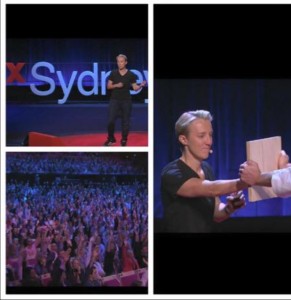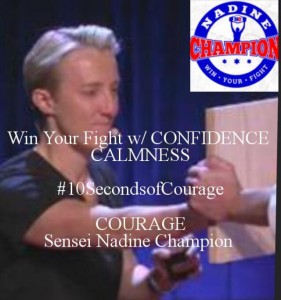

1. What was it about Sensei Benny that attracted you to his teachings?
Sensei Benny is of course a world renowned martial artist and world champion fighter, so his technical skills are at the highest level. As a teacher, he goes so far beyond showing me the “how” of a action, but also is remarkable at explaining the “why”. I’ve trained with many great instructors in the past 30 years, but Sensei Benny always emphasised understanding the technique from all angles instead of just being able to copy the movements. Just because you can perform a move doesn’t mean you understand it.
This deeper understanding of the physical skills or external training led to a need for understanding of the internal training which is the mental, emotional and spiritual side of Sensei Benny’s style – Ukidokan. This was what really blew me away about him as a Sensei and a person. He operated on a whole other level from anyone I’d ever met before. For want of a better explanation… he reminded me of Yoda.
Internal training taught me to find the truth under the truth in myself. Say the story I mentioned in my TEDx talk about Sensei Benny putting me in the ring with his best fighter- it’s easy to blame your emotions on someone else. I was mad this guy was beating me and laughing at me. That’s as deep as many people will look.
The part of that story I didn’t tell in order to keep it brief was that between rounds Sensei Benny held my headgear so I couldn’t look away and inches from my face asked me gently why I was “really” crying? The truth under the truth was that I was embarrassed to be performing so badly in front of him and that my feelings were hurt that my opponent was humiliating me. In most fight gyms those are not things you say out loud!
Sensei Benny is interested in how you really feel and helping you to deal with that. The surface stuff is just that- only surface. Real change happens in the uncomfortable layers underneath where your deeper truth resides. That’s where you learn to be truly strong and have real courage.
2. Would you say that internal training is underrated compared to external training? And Why?
I would say many people who operate primarily on the surface level would value external training more highly, but simply because that’s all they’ve been exposed to. As people we look for examples to follow, and most examples in the fight world of what it is to be a good fighter are about the physical skills. In martial arts the principles and philosophies are perhaps often more widely incorporated and valued.
Sensei Benny talks a lot about fighting being mostly mental and the fighter’s mental edge. This is internal training in the ring. I’ve taught many a group of fighters and watched them bristle with uncomfortability when I switch from speaking about striking techniques to how it feels to be afraid in the ring. But the reality is if you feel no fear then you are not in the best mental health. It takes a true warrior to be brave enough to face their fears and discuss them openly so that others may grow.
Internal training is the best part for me. The physical skills are awesome to have, but it’s been the internal training that has had the biggest effect on improving my whole life in and out of the gym. I use the internal concepts 100 times a day, from starting my day with gratitude, to letting go of anger or being kind to people. Even just small things like drinking enough water as a small act of respect and care for myself. My internal training has been the most profound life altering journey that is priceless to me.
3. How do you incorporate ’10 seconds of courage’ into your coaching and every day life?
I teach people every day to get out of their comfort zones, whether it’s sparring in the boxing ring or trying out the treadmill for the first time. We all have moments where we could use a little courage to take a risk or even just to be brave enough to try to change our thinking.
As a coach, I am lucky to have the chance to encourage people to push beyond their fears. We are all scared of something, big or small. Using 10 seconds of courage to tackle the small challenges is great practice for when you face the big scary challenges in life. In the gym, I coach students to be brave enough to spar with a better fighter, to admit how a tough session really made them feel, to try something they’re not good at or to step on the scale for a weight loss weigh in. It’s amazing how differently you approach things when you’ve decided to have a short burst of bravery instead of backing away from a challenge. All the coolest stuff happens in the area outside your comfort zone.
The boxing ring is like a microwave for cooking courage. It brings forward fears and insecurities quickly. For the ones brave enough to go there, this makes every day life so much easier. There are so many great opportunities in a day to have a little courage for yourself.
Many people struggle with lacking confidence or battling with their own emotions that get in their way and hold them back. 10 SoC is a great way to counteract those challenges because you don’t have to be brave all the time… just for a few seconds. From speaking up for yourself, to making good choices around how you treat your body or simply saying yes instead of no to an offer. There are always so many chances to build a little bit more courage into your day.
4. How did you strategize or utilize using your Ukidokan warrior spirit to beat cancer?
My Ukidokan warrior spirit is a huge part of who I am and how I approach the world. When I was diagnosed with Hodgkin’s Lymphoma I was scared and sad, but I also knew I had a choice. I chose to accept my diagnosis instead of battle it within myself. I accepted my treatment and tried to be brave.
Sometimes being brave means having grace and honouring your feelings. So I had many a tear but I also had many laughs along the way. Sensei Benny taught me that when training gets really tough you have to find the joy in it. At the darkest moment when your entire body is screaming with pain, you have to find a spark of joy that you are even alive to be able to feel that pain. So during my cancer treatment I would try to smile at it and be grateful for the small things. The treatment sucked, but at least I live in a country where they have these life saving treatments. Perspective is important.
My years of experience have taught me who I am. Sensei always emphasised knowing who you are, not telling yourself who you think you are. So my experience gave me a humble knowing – that I’m a fighter and that I know how to win.
So I made a decision with cancer at the very start that I would survive it. Whether it proved true or not, I would fight like I was going to win. In the ring, you have to go into the fight with a knowing you can win, even though you can’t control the actual outcome. Cancer was the same for me- even if I died from it, I was going to face it head on and fight like I was going to win.
5. My soul signature question is how do you keep calm and carry onward, tapping into your courage= grace under pressure?
Before a fight, there are 3 C’s that important: confidence, calmness and courage. They all come from knowing your truth and from having done the hard work to earn the right to be there. When people fake the 3 C’s it looks like arrogance, disconnection and bravado. But true grace under pressure comes from being brave enough to really face yourself and find out who you really are. That way when the pressure is on you have a secret weapon you can use at any time. The key is to not psych yourself out by giving in to your nerves.
I was nervous before my TEDx talk, but I made a decision as I stood backstage that I would go out and just be me. I knew I had done the practice to go out and give the speech so that made me confident. I’d faced my fears about what could go wrong. I’d decided I would nail it and let go of the fact I might not, but I would approach it like it would be awesome. Then I turned the volume down on my fear and chose to turn the volume up on the possibility that standing on that stage in front of thousands of people might be fun. Guess what? It was more fun than I could have imagined!